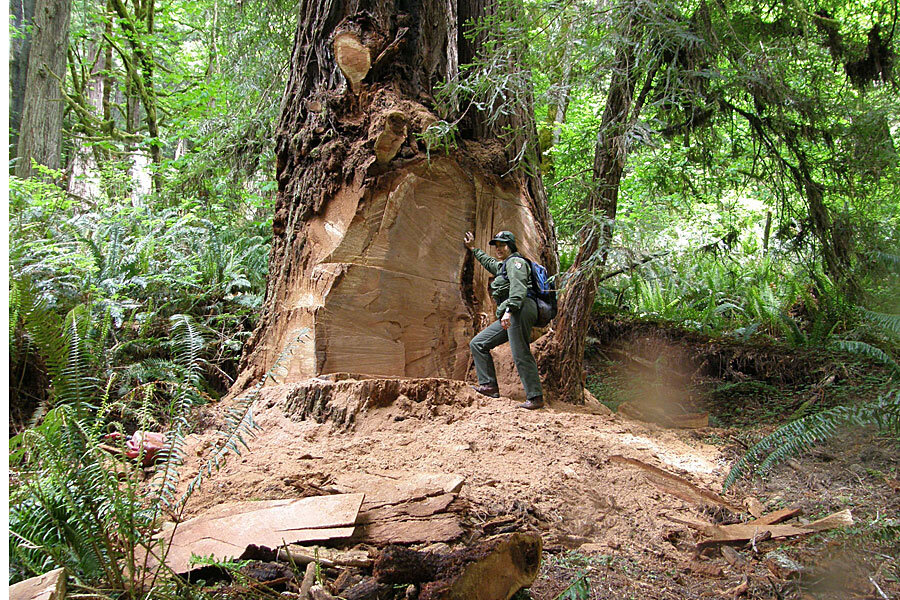Why redwood burl poaching is so destructive
Loading...
Authorities say unemployment and drug addiction have spurred an increase in the destructive practice of cutting off the knobby growths at the base of ancient redwood trees to make decorative pieces like lacey-grained coffee tables and wall clocks.
The practice — known as burl poaching — has become so prevalent along the Northern California coast that Redwood National and State Parks on Saturday started closing the popular Newton B. Drury Scenic Parkway at night in a desperate attempt to deter thieves.
Law enforcement Ranger Laura Denny said Tuesday that poachers have been stalking the remote reaches of the park with their chain saws and ATVs for decades, but lately the size and frequency of thefts have been on the rise.
"When I interview suspects, that is the (reason) they say: their addiction to drugs and they can't find jobs," she said.
Her husband, park district interpretation supervisor Jeff Denny, said it is comparable to poor people poaching rare rhinos in Africa to sell their horns. Jobs are hard to come by since the timber and commercial fishing industries went into decline.
"Originally there were 2 million acres of old growth forest that spanned the coast of Northern California from Oregon to Monterey," he said. "Over the past 150 years, 95 percent of that original forest has been cut. The only remaining old growth forest in existence now is almost entirely within the Redwood national park" and some state parks.
A redwood tree can survive the practice, but the legacy of the organism that could be 1,000 years old is threatened, because the burl is where it sprouts a clone before dying. Sprouting from burls is the prevalent method of redwood propagation, and the source of the Latin name for coast redwood, Sequoia semper vierens, or forever living, he added.
Lorin Sandberg is a burl dealer in Scio, Ore. He occasionally goes to Northern California to buy burl, but it is tough to find any more, with almost all of the old growth that makes the best burls protected on public land. The good stuff with a lacey grain full of eyes will go for $2 to $3 a pound, unseasoned.
Finished dining room tables are being offered for $1,300 on eBay.
"I don't buy them unless they have proof of where they got it," he said. "I've got to have a paper trial. If there's not a paper trial, it can stay in their yard."
With few law enforcement rangers — and 133,000 acres of park stretching south from the headquarters in Crescent City, Calif. — to patrol, arrests are rare, Laura Denny said. She can recall two or three over the past 12 years. While charges can be felonies carrying prison time, convictions usually end up as misdemeanors carrying fines.
She is currently chasing a bunch that cut a massive burl from a redwood just south of the mouth of the Klamath River that was discovered by a bear researcher tramping the woods in April. The cut left a scar measuring 8 feet by 10 feet.
Over the course of weeks, the thieves cut the burl into slabs weighing more than 100 pounds each that they dragged behind ATVs through the woods several hundred yards to a road.
She found the slabs in a burl dealer's yard. After matching the wood to pieces left behind at the scarred tree, she seized the slabs. The dealer had paid $1,600 for eight slabs that he was going to sell for $700 apiece, for a total of $5,600.
"They are very difficult to catch because they move site to site," operate in remote areas far from roads, and even the sound of a chain saw doesn't travel far in the woods, she said of poachers.
She hopes that the road closure will raise awareness among park visitors so they question the source of slabs offered for sale at burl shops.
___
Follow Jeff Barnard at https://twitter.com/JeffBarnardAP .
Copyright 2014 The Associated Press. All rights reserved. This material may not be published, broadcast, rewritten or redistributed.







